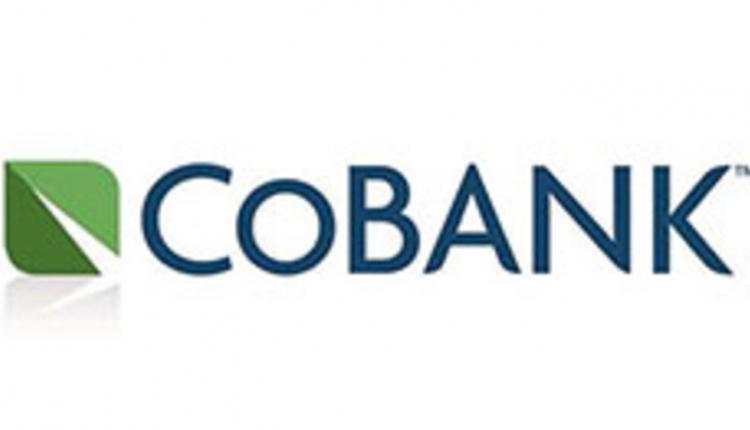The information below has been supplied by dairy marketers and other industry organizations. It has not been edited, verified or endorsed by Hoard’s Dairyman.

“A cow doesn’t simply stop producing milk when she’s no longer brought to the parlor each day,” said Jennifer Roberts, DVM, Boehringer Ingelheim. “The more milk she’s producing at dry-off, the greater the pressure in her udder, which can lead to milk leakage.”
Studies have shown that cows producing more than 33 pounds of milk at dry-off have an increased risk of leaking.1 “When leakage occurs, it can open the teat end and allow bacteria to enter the mammary gland,” explained Dr. Roberts. “This creates a risk for cows at dry-off and may lead to mastitis.”
Holistic Dry Cow Care Optimizes Udder Health, Mastitis Management
Dr. Roberts likes to look at the dry period from multiple angles: mastitis management, udder health and cow longevity. With the innovative tools available today for dry cow care, producers are better equipped than ever before to attain their goals.
Dr. Roberts has three tools she recommends for a holistic dry-off protocol, each adding value to the merits of the next:
1. Oral acidogenic boluses decrease the level of milk production right at dry-off, creating a more comfortable experience for the cow, and lowering the risk of milk leakage.2-4 “This supplement is a valuable tool to help cows at dry-off reduce milk production more quickly, support udder health, and improve cow welfare,” said Dr. Roberts. “It’s even better that we can do it without compromising her health or comfort.”
In a study, cows given acidogenic boluses at dry-off experienced reduced somatic cell counts and lower risk of clinical mastitis. Subsequently, those same cows had a lower likelihood of herd removal after both 90 and 300 days in milk.2 In the same study, cows given the supplement spent 33 more minutes lying down the day after dry-off.3
“Think about the difference a 30-minute nap can make in your day,” said Dr. Roberts. “This rest time not only indicates a comfortable cow, but is especially important for cows just transitioning from the milking herd to the dry cow pen.”
2. Dry cow therapy is one of the most effective tools in treating subclinical mastitis. Clearing lingering infections during the dry period also supports udder regeneration, preparing cows for a healthier freshening.5
For producers looking to cut antibiotic use and associated costs, selective dry cow therapy — in which antibiotics are only used to treat cows that likely have mastitis — is an option to explore with your veterinarian.
3. An internal teat sealant is a protective barrier that mimics the naturally forming keratin plug. Since more than 25% of cows don’t form a keratin plug at dry-off, adding this barrier helps reduce the risk of mastitis-causing pathogens entering the teat.6
“There’s value in a holistic approach to dry-off,” Dr. Roberts asserted. “We’re getting the benefits of each tool in trying to maintain and ensure udder health for that cow in the next lactation and beyond.”
Complement Dry-Off Protocol with a Close Eye on Management
The environment and nutrition of cows during the dry period are also important for their health and performance in the next lactation. Dr. Roberts reminds producers that clean, well-ventilated and temperature-controlled dry cow pens keep animals comfortable, and minimize the risk of mastitis-causing pathogens. “Just because they aren’t going to the parlor each day doesn’t mean we can forget about our dry cows while they rest,” she shared.
Dr. Roberts encourages collaboration with a herd nutritionist and veterinarian to establish appropriate rations and protocols for dry cows. Maintaining dry cow body condition throughout the transition period can reduce their risk of metabolic diseases, such as ketosis, after calving. Ideally, cows should maintain a body condition score of around 3.5 during the dry period.7
Dry-Off Can Set Up Cows for Long-Term Success
“No one thing alone is going to eliminate the risk of mastitis, and sometimes even when we do everything right, cows end up getting mastitis,” concluded Dr. Roberts. “But every little thing that we can do to incrementally reduce that risk is going to be a benefit to the cow and to the farm in terms of longevity in the herd, productive life and profitability.”
About Boehringer Ingelheim
Boehringer Ingelheim provides innovation for preventing and treating diseases in animals. The company offers a wide range of vaccines, parasite-control products, and medicines for pets, horses, and livestock to veterinarians, animal owners, farmers, and governments. As a leader in animal health, Boehringer Ingelheim values that the health of humans and animals is deeply connected and strives to make a difference for people, animals, and society. Learn more at www.bi-animalhealth.com.
©2025 Boehringer Ingelheim Animal Health USA Inc., Duluth, GA. All rights reserved. US-BOV-0366-2024A
References:
1 Vilar MJ, Rajala-Schultz PJ. Dry-off and dairy cow udder health and welfare: effects of different milk cessation methods. Vet J doi: 10.1016/j.tvjl.2020.105503.
2 Florentino CC, Pena-Mosca F, Ruch M, et al. Randomized clinical trial evaluating the effects of administering acidogenic boluses at dry-off on udder health, milk yield and herd removal. J Dairy Sci 2024;107(6):3899–3915. doi: 10.3168/jds.2023-23757
3 Florentino CC, Shepley E, Ruch M, et al. A randomized clinical trial evaluating the effects of administration of acidogenic boluses at dry-off on rumination and activity behavior in the 14 subsequent days. JDS Comms 2023;4(4):293–297.
4 Maynou G, Elcoso G, Bubeck J, Bach A. Effects of oral administration of acidogenic boluses at dry-off on performance and behavior of dairy cattle. J Dairy Sci 2018;101(12):11342–11353.
5 National Mastitis Council. “Dry cow therapy.” 2006. Available at: https://www.nmconline.org/wp-content/uploads/2016/09/Dry-Cow-Therapy.pdf. Accessed 4 Nov. 2024.
6 Ruegg P. Managing the dry period for milk quality. University of Wisconsin. 2011.
7 Penn State Extension. “Body condition scoring as a tool for dairy herd management.” 2023. https://extension.psu.edu/body-condition-scoring-as-a-tool-for-dairy-herd-management. Accessed Nov. 4, 2024.




